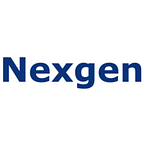2024 Vision: Exploring Emerging Retail Trends and Their Impact on Retail Stores
2024 Vision: Exploring Emerging Retail Trends and Their Impact on Retail Stores
As we step into 2024, the retail landscape is undergoing a profound transformation, driven by emerging trends in retail. From advancements in technology and shifts in consumer behavior to changes in market dynamics, the retail landscape is constantly evolving. Understanding these emerging trends and their implications is crucial for retailers seeking to remain competitive and relevant in today’s marketplace. Planograms, once static blueprints, are now dynamic tools infused with advanced technologies, personalization strategies, and sustainability initiatives. In this article, we will explore the retail trends shaping the industry and their transformative impact on retail stores using planogram services.
- Dynamic planogram personalization: Shelf space planning planograms are no longer static blueprints, but dynamic, personalized experiences tailored to individual store layouts and customer preferences. Advanced algorithms and AI-powered solutions enable retailers to create highly customized planograms that optimize product placement, pricing, and promotions based on real-time data and consumer insights. By leveraging dynamic planogram personalization, retailers can enhance their shopping experience, drive sales, and foster customer loyalty.
- Integration of augmented reality (AR): AR technology is revolutionizing the way retailers design and implement planograms. In 2024, retailers will incorporate AR features into planogram software, allowing store managers to visualize and interact with virtual product displays in real-world environments. With AR-enabled planograms, retailers can experiment with different layout configurations, test product placements, and simulate customer interactions before making physical changes in-store. This immersive approach streamlines planogram design processes, reduces costs, and ensures optimal shelf setups for maximum impact.
- Sustainability as a priority: As environmental sustainability becomes a top priority for consumers and retailers alike, planogram strategies are evolving to align with eco-friendly practices. In 2024, retailers will implement sustainability-focused planogram initiatives aimed at reducing waste, minimizing carbon footprints, and promoting responsible consumption. From optimizing shelf space to reduce overstocking and food waste to prioritizing eco-friendly packaging materials, sustainability is integrated into every aspect of planogram design and implementation. By adopting sustainability-focused planogram strategies, retailers not only meet consumer expectations but also contribute to a more sustainable future.
- Data-driven optimization: Data analytics plays a pivotal role in optimizing planograms for maximum effectiveness. In 2024, retailers will leverage advanced analytics tools and machine learning algorithms to analyze sales data, consumer behavior, and market trends. By harnessing data-driven insights, retailers can fine-tune planograms to align with changing consumer preferences, seasonal trends, and competitive landscapes. Real-time monitoring and predictive analytics enable retailers to identify opportunities for improvement, adjust planograms on the fly, and stay agile in response to evolving market dynamics.
- Collaboration and visualization tools for planogram management: Collaboration and visualization tools are transforming planogram management processes in 2024. Cloud-based platforms and virtual collaboration software enable retailers to streamline communication and collaboration among stakeholders involved in planogram design and execution. Through interactive visualization tools, store managers can share planograms with team members, gather feedback in real-time, and make informed decisions collaboratively. This collaborative approach enhances communication, fosters teamwork, and ensures alignment across departments, leading to more effective planogram implementations and improved store performance.
Conclusion
The retail sphere is witnessing a metamorphosis propelled by emerging trends. These trends encompass dynamic planogram personalization, integrating augmented reality, prioritizing sustainability, and embracing data-driven optimization. Through the integration of advanced technologies, eco-conscious practices, and insightful analytics, retailers are reshaping the landscape of planogram strategies.
